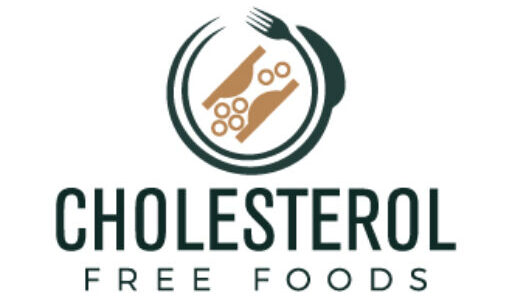Definition of HDL-cholesterol and LDL-cholesterol
HDL or HDL-cholesterol (HDL-C) is a lipoprotein that transports cholesterol from the cell membrane to the liver. This statement is incorrect because HDL does not contain cholesterol at all, and it are also known as good cholesterol. HDL and LDL cholesterol are the lipoproteins that carry cholesterol in the blood; HDL is high-density lipoprotein (HDL stands for high-density lipoprotein) and LDL is low-density lipoprotein (LDL stands for low-density lipoprotein). This classification of lipoproteins is based on the technique of isolating lipoproteins, namely the ultra-centrifugation method. This method involves centrifuging the plasma in a test tube at high speed and separating the lipoproteins according to their density, with the most dense ones (HDL) floating at the bottom of the tube and the less dense ones (LDL and other lipoproteins) floating at different levels in the test tube. Cholesterol is a lipid molecule that is insoluble in water. Lipoproteins are spherical particles composed of proteins and lipids that carry cholesterol and other lipids in the blood. The main lipoproteins involved in transporting cholesterol are HDL and LDL.
What is HDL-cholesterol?
HDL or HDL-cholesterol (HDL-C) is a lipoprotein that transports cholesterol from the cell membrane to the liver. This statement is incorrect because HDLs do not contain cholesterol at all, and they are also known as good cholesterol.
Origin of HDL
HDL is derived from the Apo A1 protein, which is synthesized in the extracellular space. This protein takes up cholesterol and phospholipids from the membrane and circulates through the tissues, exchanging protein and cholesterol esters with other lipoproteins as they enter the circulation.
Characteristics of HDL
- Higher percentage of protein than lipid.
- Density between 1,063 and 1,210 g/ml.
- Diameter between 70 and 120 angstroms, the smallest lipoprotein.
- Structure of HDL
- HDL, like other lipoproteins, is a spherical particle composed of
- An outer layer of phospholipids, proteins, and cholesterol.
- A hydrophobic liquid core containing triglycerides and cholesterol esters.
- HDL proteins can be recognition proteins, such as ApoA1 and ApoA2, and enzymes, such as LCAT.
- Functions of HDL
The primary function of all lipoproteins is to dissolve fat in the blood. HDL is a lipoprotein that is responsible for transporting cholesterol from tissues outside the liver to the liver. This is called reverse cholesterol transport. In the liver, cholesterol is converted to bile acids, which are then excreted or recycled by the intestines.
HDL Levels in Human Blood
High levels of HDL cholesterol are associated with the prevention of cardiovascular disease (CVD). Normal HDL levels in adults are 40 to 60 mg/dL (SI units of 1.04 to 1.55 mmol/L). Levels above 60 mg/dL are recommended for the prevention of CVD; HDL levels below 40 mg/dL are associated with an increased risk of CVD.
What is LDL cholesterol?
LDL or low-density lipoprotein cholesterol (LDL-C) is a lipoprotein that transports cholesterol from the liver to extrahepatic tissues. High levels of this lipoprotein are also known as bad cholesterol because it is deposited in the arteries and produces atherosclerotic plaques.
Sources of LDL
LDLs originate from VLDLs (very low density, large, triglyceride-rich lipoproteins) that are formed in the liver. These VLDLs travel through the bloodstream, carrying triglycerides to the tissues and reducing their size until they become LDLs, thereby increasing cholesterol.
Characteristics of LDLs
- A higher percentage of lipids than proteins.
- The density between 1.019 and 1.063 g/ml.
- The diameter is about 250 angstroms.
- The characteristic protein of LDL is Apolipoprotein B100.
- Structure of LDL
- LDLs are also spherical particles and are larger than HDLs. They are found in.
- The outer layer of phospholipids, cholesterol, and apoB100 protein.
- The fat center is filled with cholesterol and triglycerides.
- The major LDL is apoB100, a protein recognized by cellular receptors.
LDL Function
LDL is responsible for transporting cholesterol to the tissues that need it. VLDL, which contains triglycerides and cholesterol, is assembled in the liver. Triglycerides are released in the circulation. The smaller form of this VLDL is LDL. The apoB100 protein of LDL binds to cellular receptors and enters the cell by endocytosis. The cells then use this cholesterol to form membranes and other compounds.
LDL levels in human blood
High levels of LDL cholesterol are associated with cardiovascular disease (CVD). The optimal LDL level for adults should be less than 100 mg/dL (less than 2.6 mmol/L, SI). This person has a high risk of cardiovascular disease. People with high LDL levels should consult their physician in order to implement measures to reduce cardiovascular risk.
Good and bad cholesterol
Cholesterol is a molecule that is important for the function of cells and organisms. This compound is a precursor to steroid hormones, such as sex hormones and adrenocorticotropic hormones. It is also part of the cell membrane, sandwiched between the phospholipids of the lipid bilayer, which regulate membrane fluidity. To say that cholesterol is good or bad is an oversimplification of the role of transportable lipoproteins. Cholesterol builds up in the arteries and promotes the formation of fatty plaques and aneurysms, which can lead to atherosclerosis. The lipoprotein that transports cholesterol in the arteries (LDL) is misnamed bad cholesterol, while the lipoprotein that carries cholesterol away from the membrane (HDL) is nicknamed good cholesterol.








